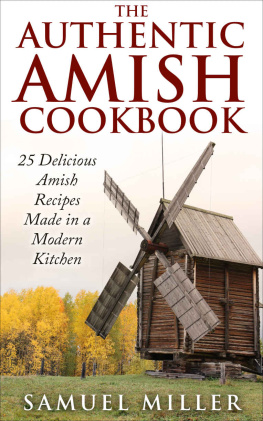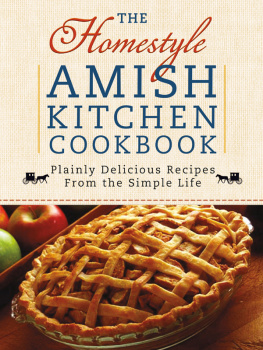Introduction
Life was chaotic. My daughter Jacinda was sick in the hospital in St. Petersburg, Florida, an hours drive away, and my young son, Tyler, needed me at home. Daughter Shannon was fifteen at the time too young to drive but bearing great responsibility by working at Yoders Restaurant to help support the family. My days were spent keeping other peoples houses clean and attempting to be in too many places at one time.
I prayed for help.
I shouldnt have been surprised when a friend called me the next day. She had a cousin in Chihuahua, Mexico, she said, who was looking for a family to assist in the United States. Would I like her cousin to come and help me?
Within the week, two planes passed in the night one from El Paso, Texas, and the other, a Mercy Medical flight destined for Cincinnati, Ohio, where Jacinda would receive treatment at the childrens hospital.
Rosy Banman, our helper from Mexico, was the daughter of a Russian Mennonite minister. Though she was young, only nineteen, she was amazingly efficient. Not only did she keep everything running smoothly in my absence, but her quiet spirit delighted those who came in contact with her.
A week before returning to Mexico, Rosy presented me with a gift a cookbook from her Mennonite community. I had planned to send Rosy home with the usual souvenirs, Florida oranges or key-lime-and-coconut candies, bought locally, but I also wanted to send her off with an Amish cookbook from our own community. I scoured Pinecraft for such a book, going from store to store, but I came away empty-handed. No such item was available because none had ever been written.
So after Rosy left, I began compiling my own cookbook. My good friend Vera Overholt helped in the effort by handing out recipe cards to Pinecraft women on which to write their recipes. After I mentioned the project in my letters to The Budget newspaper, many ladies in Amish communities across the country responded. All of the recipes in this book are by residents of Pinecraft or those who have vacationed here. Pinecraft is a popular vacation spot for many Amish and Mennonites.
Little did I know it would take three years to finish my cookbook. Much of it was written in a hospital room, and several times I had to put my work away and concentrate on caring for Jacinda, whose health continues to be fragile. Nearly seven hundred recipes and three years worth of excerpts from Letters from Home in the national edition of The Budget newspaper went into that first cookbook, Taste of Pinecraft. The book you hold in your hands, containing more than three hundred recipes, is culled from that original collection, with many new recipes included.
The excerpts interspersed among the recipes in this book give only a glimpse of life in Pinecraft. No book could capture every element and every character that comprises our unique settlement.
Amish cooking is traditional American cooking at its best, and like America itself, Amish cooking includes a lot of international flavors. Some recipes even have German and Dutch names, and some Mexican-American and even Italian recipes will be found in these pages.
Amish cooking is defined by simplicity. With only a few exceptions like alligator meat! these recipes require only the most basic commonly available ingredients, what some people refer to as whole foods. In the ingredients lists you will not find things like chipotle chilies in adobo sauce or cold-pressed extra virgin olive oil, as good as those things may be. These recipes, like the Amish themselves, are straightforward and plain, but never boring. That is why this book is called Simply Delicious Amish Cooking.
From the various clippings from The Budget scattered throughout this book, youll also notice that food is a special part of Amish social life. It is served at potlucks, marriage services, special events, fundraisers, and farewells. Wherever the community gathers, food will be abundant.
Food is also one of the ways we reach out to the larger world. We make visitors, whether old friends or strangers, feel welcome. Sharing food is how we support one another in difficult times and show our love to those in need. It is how we support one another in difficult times and show our love to those in need. It is a gesture of our caring for each other and, ultimately, an expression of how God loves us and provides for our needs. Amish food is not just food, its a reminder of our dependence on a loving God.
The people known as the Amish first organized between 1693 and 1697 when a Mennonite leader named Jacob Ammann and a minority group of followers in Switzerland divided from the main body of Mennonites. Ammann held a strict view of excommunication and the banning of offending believers from the church.
A small group of Dutch Mennonites had previously settled in German-town, Pennsylvania, in 1683, and greater numbers began arriving in the United States in 1710. The earliest Amish immigrants to the New World arrived in Pennsylvania about 1720, settling in Berks County and later in Lancaster County.
The Amish largely agree with the Mennonites in doctrine but even today still hold to a strict observance of excommunication and a stricter pattern of dress than the Mennonites. They withhold from making lifestyle changes, choosing to drive horses and buggies rather than cars and usually shunning modern conveniences. Today, the largest concentration of Amish is in Holmes County, Ohio.
Today the true Mennonite Church (Mennonite and Amish Mennonite) is still a separatist church and is neither Catholic nor Protestant. They believe in the following Bible principles:
1. A full obedience and discipleship to Christ and all his commandments, resulting in holy living (Matthew 7:21; Acts 5:32; 1 John 2:4 6)
2. Love for enemies, nonresistance to evil, nonparticipation in war (Matthew 5:38 39; James 5:5 6; 1 Peter 3:13 18)
3. A true separation of church and state as strangers and pilgrims (1 Peter 2:11 12)
4. Baptism for believers only (Mark 16:31)
5. Inspiration of the Bible in its entirety (2 Timothy 3:16)
6. Nonswearing of oaths (Matthew 5:33 37; James 5:12)
7. Modesty and simplicity of attire, and nonadornment with jewelry, etc. (1 Peter 3:3 4; 1 Timothy 2:9)
8. Recognition of Gods order of headship and the wearing of veiling for sisters (1 Corinthians 11:1 6)
9. Marriage as instituted of God, sacred, and for life (Matthew 19:3 6; Hebrews 13:4)
10. The sanctity of sex. That young people keep themselves pure (Ephesians 5:3 5) and that they marry only Christian partners (2 Corinthians 6:14 18)
11. The kiss of charity practiced among believers (Romans 16:16; 1 Peter 5:14)
12. The anointing of oil for the sick (James 5:14 15)
13. Feet washing among the believers (John 13)
14. Lawsuits, secret societies, labor unions, and life insurance as unscriptural (Psalm 37:25; Jeremiah 49:11; Matthew 6:25 33; 1 Corinthians 6:1 8; 2 Corinthians 6:14 18; Ephesians 5:11 12)



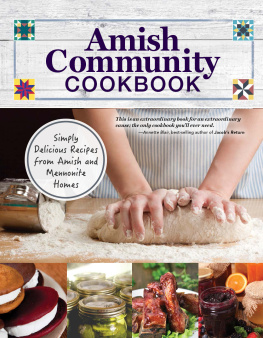


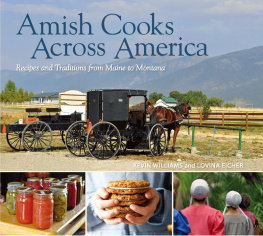


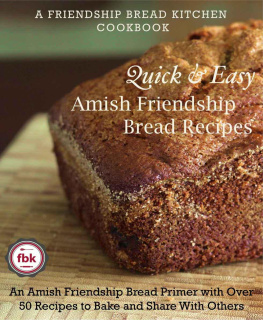
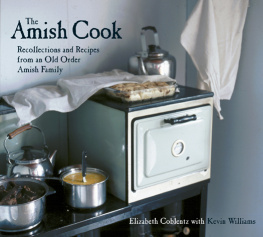
![Beverly M Lewis] - The Beverly Lewis Amish Heritage Cookbook](/uploads/posts/book/96304/thumbs/beverly-m-lewis-the-beverly-lewis-amish-heritage.jpg)
